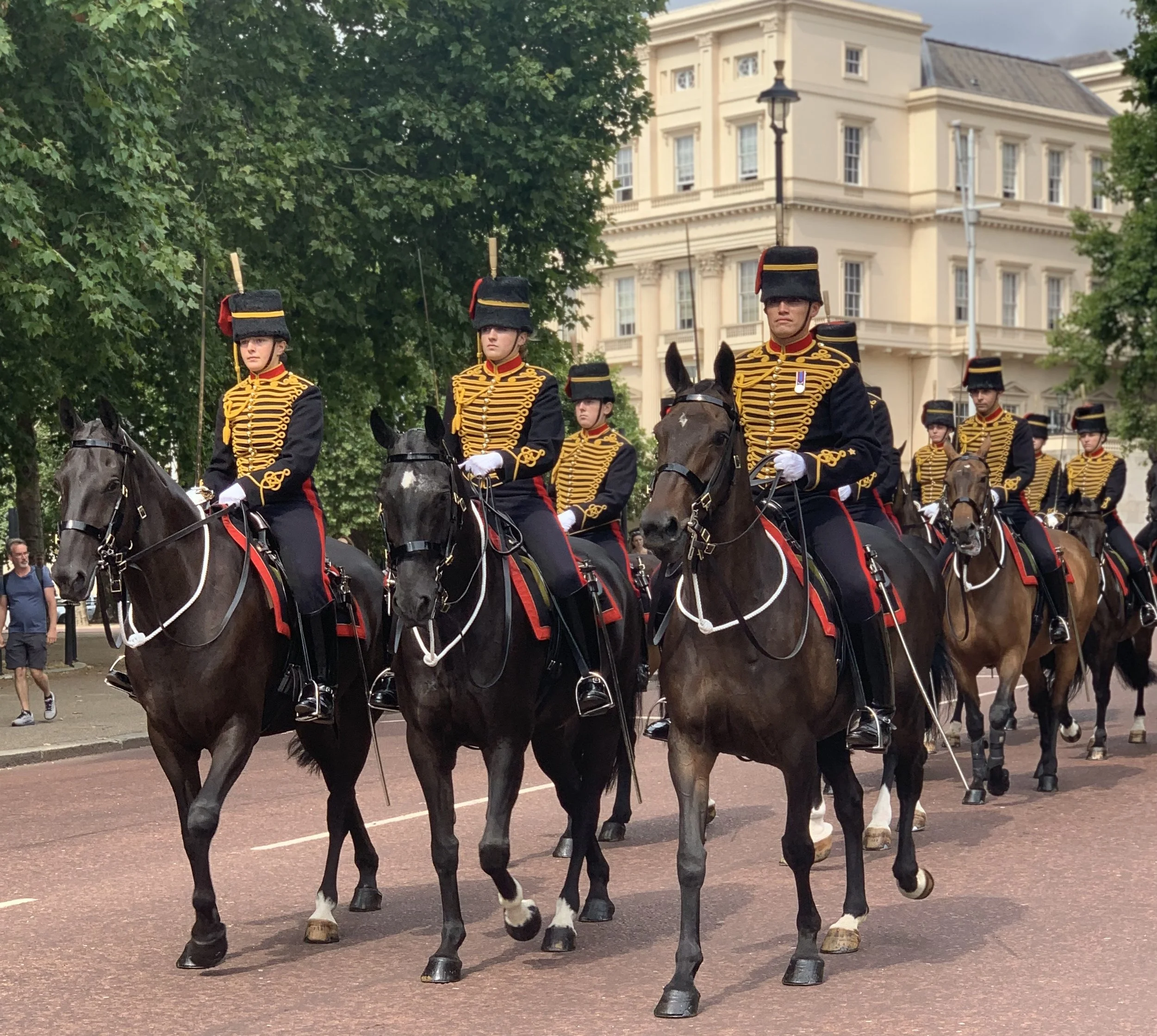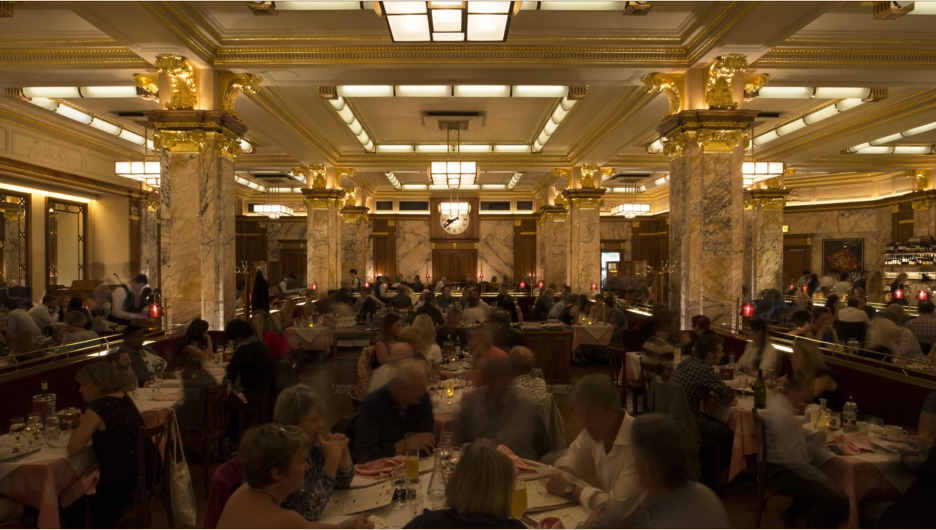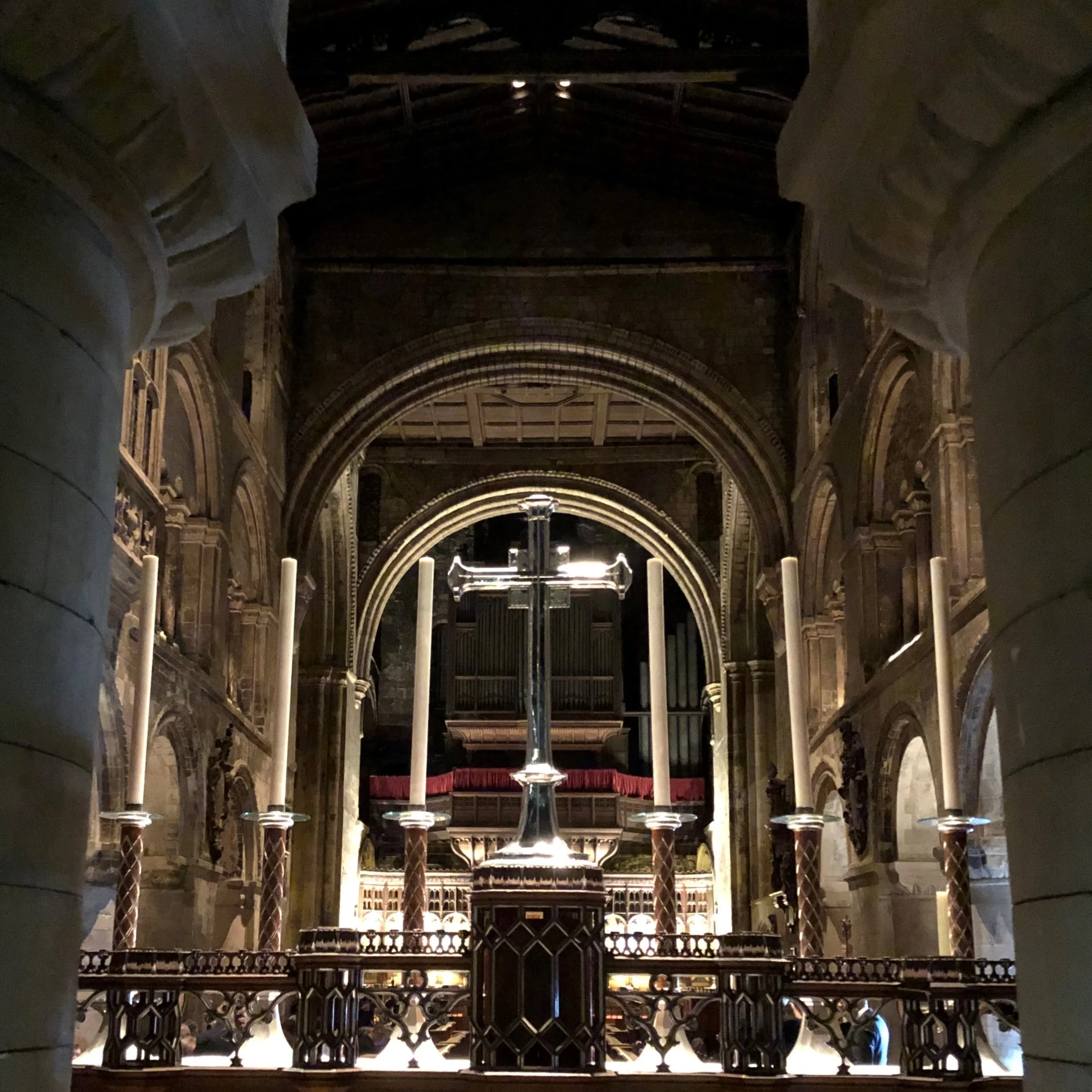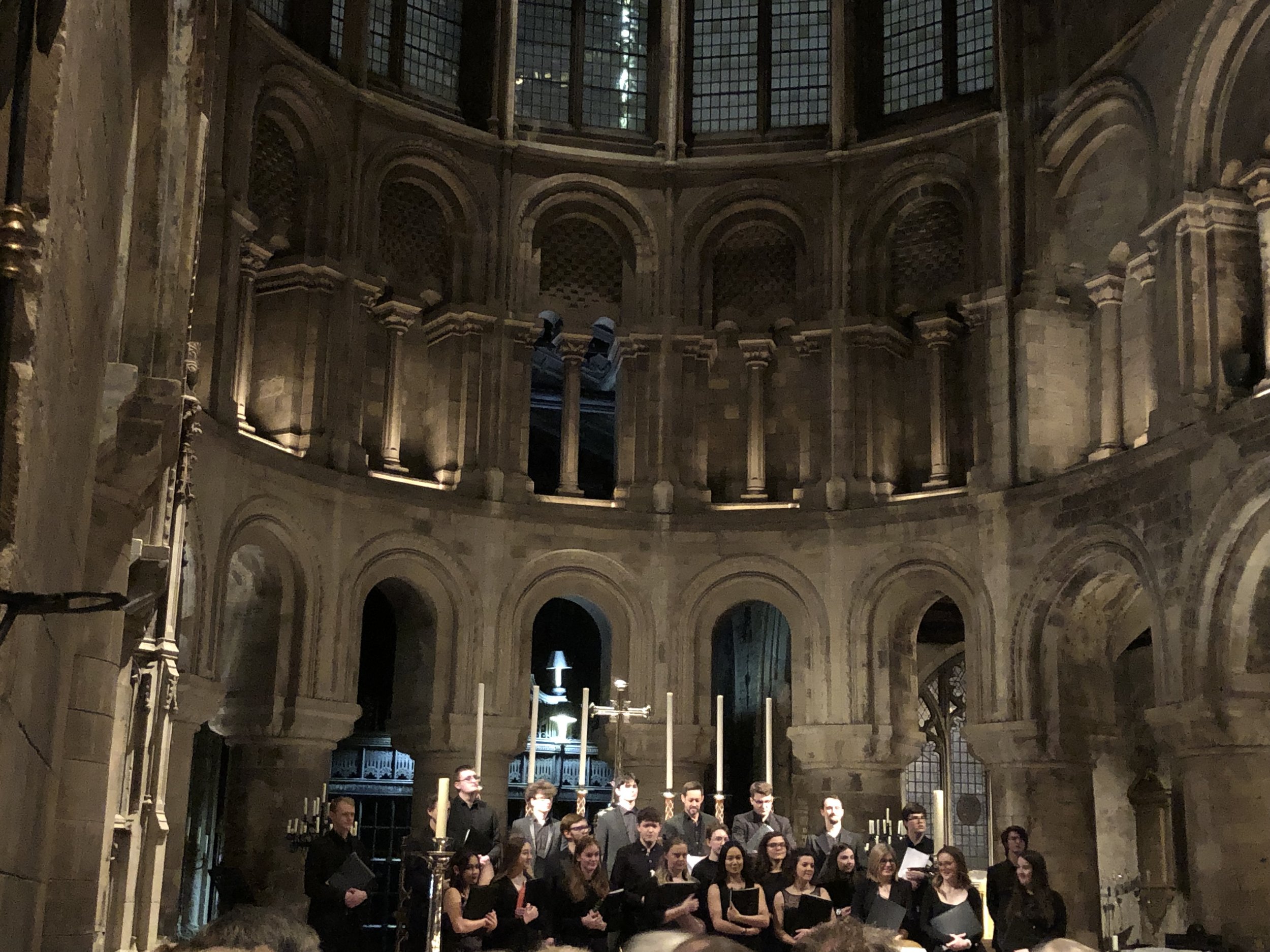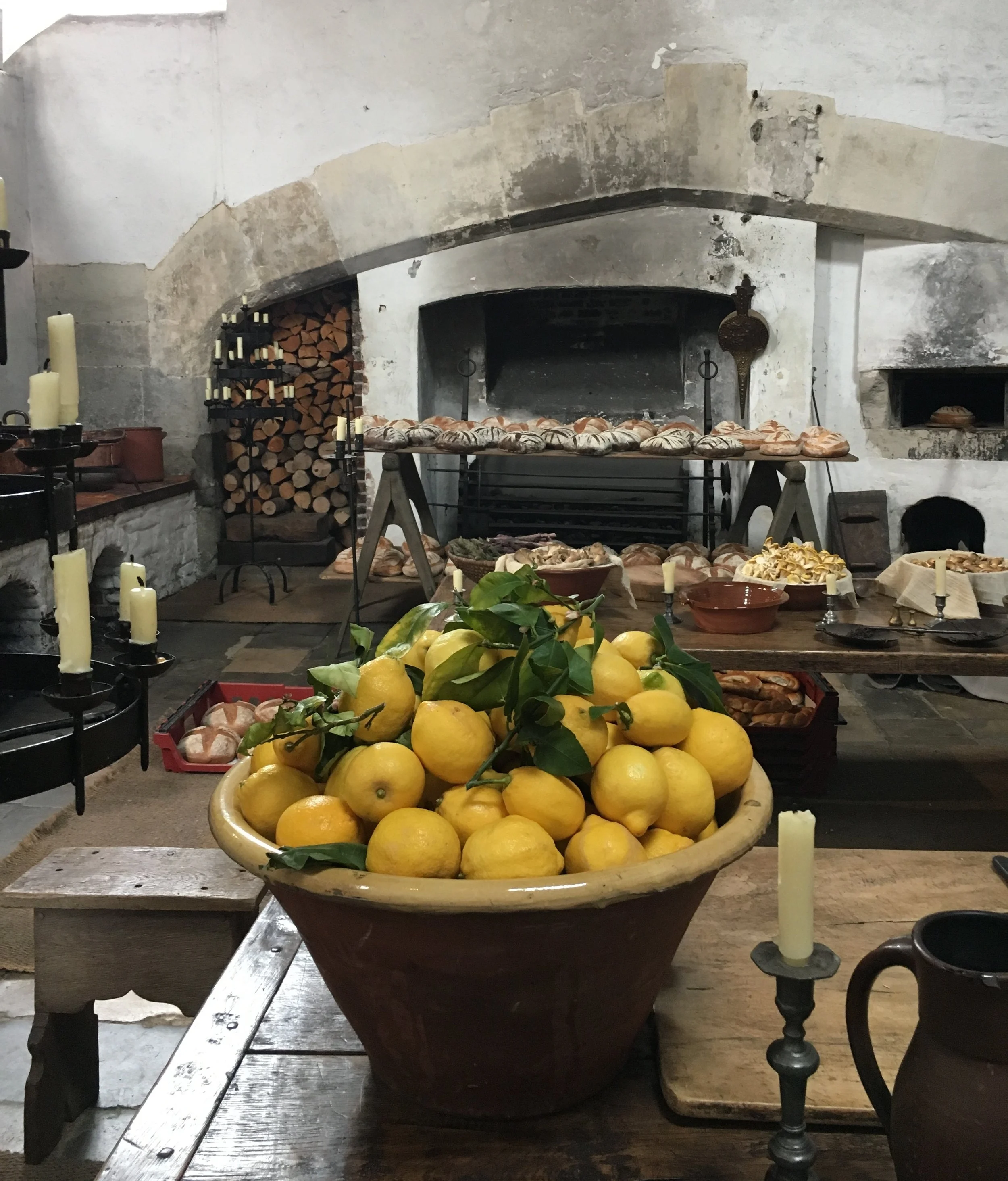Happy and Glorious.......
/…..and long to reign over us!
The Trooping of the Colour was as wonderful spectacle as ever, it’s the type of event that Britain does best - be still my patriotic beating heart! It was a day to surpass all others as the start of four days of Platinum Jubilee celebrations, piqued by the anticipation of was HM The Queen going to be waving from the palace balcony or not.
Through dint of good preparation and good luck I secured myself a space on The Mall, perched on top of a bollard that, at the most exciting moments, would give me access to a lamp post to cling on to whilst balancing on tip toe on my bollard. My selfie attempt whilst maintaining position was not good - this was going to be a memories of the mind, not on the phone experience.
Sorry there aren’t any pictures of the military march pasts or of the Royal Family - so lovely to see all three children together and evidently enjoying themselves - but that would have required an acrobatic feat well beyond my capabilities.
Athletics however were another matter, once the police gave the nod, I hurdled the barriers and found a wonderful spot in the middle of The Mall for my first views of the truly magnificent Royal Standard flying atop of Buckingham Palace and of course the eagerly anticipated flypast.
Lambs, Lambs, Lambs
/It's that time of year again when the countryside starts to fill with the plaintive bleats of new born lambs and the anxious - or possibly exhausted - calls of the ewes trying to track down and identify their young from the increasingly bold hordes of youngsters.
In medieval England, wool became big business. There was enormous demand for it, mainly to produce cloth and everyone who had land, from peasants to major landowners, raised sheep.
Whilst the English did make cloth for their own use, very little of what was produced was actually sold abroad. It was the raw wool from English sheep that was required to feed foreign looms. At that time the best weavers lived in Flanders and in the rich cloth-making towns of Bruges, Ghent and Ypres, they were ready to pay top prices for English wool.
Wool became the backbone and driving force of the medieval English economy between the late thirteenth century and late fifteenth century and at the time the trade was described as “the jewel in the realm”! To this day the seat of the Lord High Chancellor in the House of Lords is a large square bag of wool called the ‘woolsack’, a reminder of the principal source of English wealth in the Middle Ages.
As the wool trade increased the great landowners including lords, abbots and bishops began to count their wealth in terms of sheep. The monasteries, in particular the Cistercian houses played a very active part in the trade, which pleased the king who was able to levy a tax on every sack of wool that was exported.
From the Lake District and Pennines in the north, down through the Cotswolds to the rolling hills of the West Country, across to the southern Downs and manors of East Anglia, huge numbers of sheep were kept for wool. Flemish and Italian merchants were familiar figures in the wool markets of the day ready to buy wool from lord or peasant alike, all for ready cash. The bales of wool were loaded onto pack-animals and taken to the English ports such as Boston, London, Sandwich and Southampton, from where the precious cargo would be shipped to Antwerp and Genoa.
In time the larger landowners developed direct trading links with cloth manufacturers abroad, whereas by necessity the peasants continued to deal with the travelling wool merchants. Obviously, by cutting out the middle man and dealing in larger quantities, the landowners got a much better deal! Perhaps this is why it is said that the wool trade started the middle-class / working-class divide in England.
Successive monarchs taxed the wool trade heavily. King Edward I was the first. As the wool trade was so successful, he felt he could make some royal revenue to fund his military endeavours by slapping heavy taxes on the export of wool.
Realising the importance of these taxes to his royal coffers Edward III actually went to war with France, partly to help protect the wool trade with Flanders. The burghers from the rich Flemish cloth-towns had appealed to him for help against their French overlord. Although called the Hundred Year War, the conflict would actually last 116 years, from 1337 to 1453.
During this period the taxes that had been levied began to damage the wool trade, which ultimately resulted in more cloth being produced in England. Flemish weavers fleeing the horrors of war and French rule were encouraged to set up home in England.
By the fifteenth century, not only was England producing enough cloth for her own use, materials were now being sold abroad. Working in their tiny cottages the weavers and their families transformed the raw wool into fine cloth, which would eventually end up for sale at the markets of Bristol, Gloucester, Kendal and Norwich.
In the 1570’s to 1590’s a law was passed that all Englishmen except nobles had to wear a woollen cap to church on Sundays, part of a government plan to support the wool industry.
Pre-theatre dining in London
/For many visitors London’s theatres are a treat and are just one of the (many) reasons why London is such a wonderful city. Part of the theatre experience is the pre-theatre dining but how to choose a restaurant that’s both fun and fast?
Take a leaf out of the locals’ book and stop in at places that are guaranteed to get you into the right mood for the evening show.
Brasserie Zedel, 20 Sherwood St, Soho W1F 7ED.
Hidden away behind the ZL Café in the heart of Piccadilly it’s a walk downstairs to the authentic Art Deco brasserie interior. Famous for being the only real ‘grand Parisian’ brasserie in London it oozes an aura of French charisma and professionalism.
Choose just one course here – I recommend the Steak à la Bordelaise - let your waiter know your timeframe and they’ll take it as a personal challenge to have you charmed and fed in the time you’ve allowed.
Up the stairs and into Theatreland, now it’s time for the thespians to work their magic.
Post theatre entertainment? You could do a lot worse that return to Brasserie Zedel venue and visit the Bar Américain and live music and cabaret venue – you know the way!
St Bartholomew the Great
/St Bartholomew the Great – the name says it all on so many levels – history, architecture, survival, atmosphere, film sets, and yesterday particularly, acoustics. London’s oldest parish church played host to The Brandenburg Choral Festival of London’s Spring series featuring works by Thomas Tallis and Karl Jenkins – and including my two most favourite pieces of music – Spem In Alium and Benedictus – The Armed Man: A Mass for Peace respectively.
The venue, the Damien Hirst, the music – I was an emotional puddle by the end of the evening – but a very happy puddle.
The Brandenburg Choral Festival of London exists as a platform for amateur choirs to perform in Central London venues. Over the year the Spring and Autumn festivals bring together choirs and vocal ensembles of different shapes and sizes, and from every musical background — classical and jazz, a cappella or accompanied, gospel, male voice, choral scholars, community choirs, and a whole lot more besides!
Wilton's Music Hall
/Follow the light to the end of the alley, (not an instruction I’d give in all parts of London’s East End, it never did any of Jack the Ripper’s victims any good) but this is worth it.
Stop under the huge street lamp and push open the door. You are transported into the world's oldest surviving Grand Music Hall and immediately enveloped in its intimate, albeit elegantly crumbling (Financial Times) atmosphere.
Don’t expect faded Victoriana, over 300 years the building has evolved from Victorian sailors' pub to music hall, Methodist Mission to rag warehouse, eventually falling derelict before reopening as the venue it is today.
Best seats in the house (face on to stage) are AA28 and AA29 unless you are more than 5’5” tall in which case select the seats on either side of these.
Two bars (one serving excellent gin) plus a small restaurant and plenty of seating space. Plus that very civilised concept of being able to take drinks into the theatre. Don’t forget to pre-order interval drinks and the 20 minute interval is plenty of time to share a pre-ordered pizza.
A performance to watch out for in February;- The Good, the Bad and the Fifty
In the next few weeks we will be featuring some of our favourite sites.
/The near four hundred years of Roman occupation of London isn’t always easy to spot.
London’s Mithraeum is located in the heart of the City of London but stand at the site between St. Paul’s Cathedral and the Bank of England, and you won’t see any evidence of the Roman temple. Turn back nearly 2000 years in London’s rich history by descending stairs seven meters below London’s current ground level to find where Romans trod the streets of Londinium.
The Temple dedicated to the Roman god Mithras was built of clay bricks and stone and resembled the mythic cave where Mithras killed a bull - the tauroctony - and so was windowless and dark, a The sunken rectangular space with one rounded “apse” end, shaped like an aisled church is today, with two aisles and an altar. It was originally built in c. AD 240-250 .
Hampton Court Palace Highlights
/King Henry VIII’s favourite palace and it’s easy to see why – the palace sprawls over 6 acres in 750 acres of parkland plus formal gardens of another 60 acres all set within a loop of the River Thames. It’s enormous! It had to be as King Henry VIII's court consisted of over one thousand people. And that’s just the people of the court, the support function behind scenes was almost as large.
There were 200 cooks, sergeants, grooms and pages and that’s before we start counting the personal servants, the laundry maids, and so on. Imagine the logistics of feeding that many people. The daily supply of ale alone was more than 13,000 pints a day. Not surprisingly the Palace kitchens were the largest in England.
Today we can explore the kitchens to get a feel for how the food was prepared and how the kitchen staff worked to produce such vast quantities of food.

